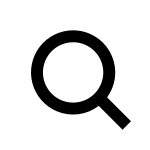During the cultural city festival Antwerp Baroque 2018. Rubens Inspires, the M HKA, the Museum of Contemporary Art Antwerp, juxtaposes the spirit of the baroque masters with the vision of contemporary top artists. With the exhibition Sanguine/Bloedrood (Blood Red), curator Luc Tuymans aims to overwhelm the visitor by placing key works from the baroque of, among others, Francisco de Zurbarán and Caravaggio, in dialogue with works by classical contemporary masters, such as On Kawara and Edward Kienholz, as well as new works by contemporary stars such as Zhang Enli, Takashi Murakami, Michaël Borremans, Sigmar Polke and Tobias Rheberger.
Jan Fabre
The shape of the patch of blue ball pen ink and the title of the work – Rorsach – refer to the Rorschach test, a psychological test introduced by Hermann Rorschach in 1921. The test is based on the tendency to project interpretations and emotions onto things, in this case ink blots. On the basis of these interpretations, psychologists try to understand the subject’s deeper characteristics and impulses. In their interpretations or ‘readings’ of the ink blots, the subjects often mention living creatures: butterflies, moths, spiders, bats, and so on.
Several common motifs in Jan Fabre’s oeuvre are to be found together in this work, including his fascination for insects, metamorphosis and the workings of the human psyche. Rorsach is a work in blue ball pen. In Fabre’s mind, this specific blue relates to the moment between night and day, between death and life, and to the moment when nocturnal creatures go to sleep and diurnal creatures wake up: the ‘blue hour’. This blue hour is the link between the ball pen and the animal world, and especially that of insects.
The adoption or quotation of existing things, such as the widely renowned Rorschach test, is a major element in Fabre’s oeuvre. Well-known and familiar images are given new substance and are incorporated into the artist’s world.

